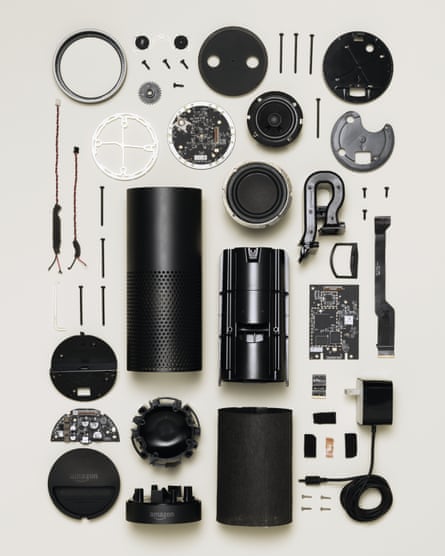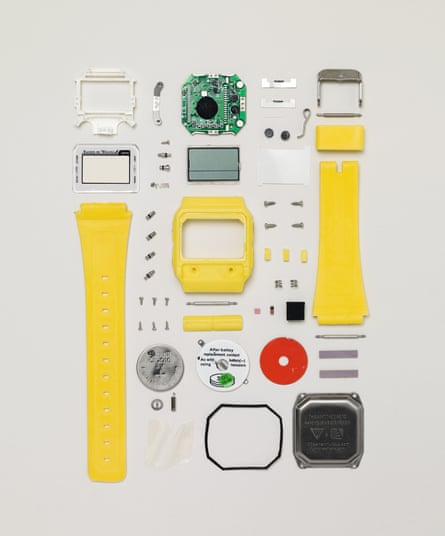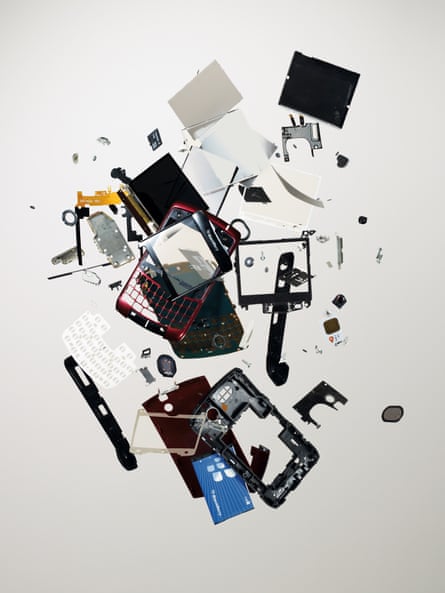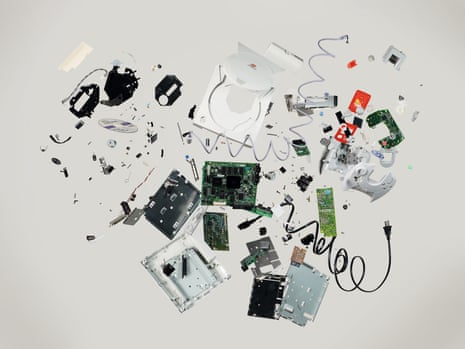By his own admission, photographer Todd McLellan was “kind of a weird kid”. As an eight-year-old, the Canadian had a workbench in his bedroom, where he would use a hammer, a soldering iron and an oscilloscope to tinker around with household objects. He particularly enjoyed taking apart his brother’s toy cars to try to see what was inside. “I thought the little seats were so cool,” he says now. “But it was so disappointing there were no pedals or steering wheel. I was like: ‘What – is that it?’”
McLellan rarely experiences the same disappointment now. For the past decade, the 42-year-old has earned a name for himself by taking apart everyday objects, neatly aligning their components, and photographing the results. “Some of them, I think there’s going to be nothing to it, and I schedule two, three hours of my day to take them apart,” he says. “And then I get started, and it’s like: ‘Oh, no. So many pieces.’”

In his 2013 debut book, Things Come Apart, McLellan focused on older gadgets – revealing the inner workings of rotary telephones, mechanical pencils, typewriters, and flip clock radios. In 2019, he has upgraded from the mechanical to the digital: in Things Come Apart 2.0, “a teardown manual for modern living”, the artist chronicles the components of a digital camera, an Amazon Echo speaker, a laptop, a 3D printer, and of course a smartphone.
The effect is as striking as ever. The 1,465 parts of a 1960s accordion contrast with the unexpected simplicity of Amazon’s 2014 home speaker, which has just 50 components (incidentally, the same number as a 2006 Apple computer mouse). McLellan makes the invisible visible, exposing the internal realities of the everyday tech that we take for granted (who knew there was tape inside an iPad?). Yet despite the book’s straightforward title, its message is anything but. Things Come Apart 2.0 is as much about putting things back together as it is about pulling them apart.
“When the first book came out, the idea of repair technology was very new,” McLellan says. “There weren’t many people doing it. Now people seem to want to get back to understanding and repairing what you have, which has been great.” The book features an essay from Kyle Wiens, co-founder of iFixit, a free online repair community that teaches users how to fix products.

“To the unquestioning and indifferent among us, advancing technology inevitably becomes more and more like magic,” Wiens writes. “What happens when we do not know how things work? We are cut off, trapped in a modern wasteland where we can only try to solve problems with our credit cards rather than with our hands and brains.” For his own part, McLellan says repairing the Amazon Echo was actually quite easy.
Yet you’d be forgiven for being overwhelmed at the idea of repairing the modern technology pictured in McLellan’s book. How could the average person hope to repair a digital SLR camera (580 teeny, tiny pieces)? McLellan admits that things have become infinitely more complicated over the last decade.
“When I was taking apart a product [for the first book], I could understand how it worked – I’d press a button and you’d see it move a mechanism,” he says. With the new book, he was exposed to “minuscule transistors, resistors, and capacitors” that he couldn’t remove without them “looking like dust” on camera. Yet, McLellan argues, just as tech has evolved, so has our ability to fix it.
“I think most people should give it a shot,” he says. “People are evolving to learn how to repair things. The knowledge is opening up and there are companies, like circuit board recycling places, that there weren’t before. There are clinics where you can repair screens and exchange certain components.” McLellan’s photographs help make the impossible seem possible: surprisingly, a 1970s toaster has more parts than a 2013 virtual reality headset.

McLellan’s favourite object to take apart was a 1985 cassette tape (24 parts). “Visually, that one is the coolest for me,” he says, “And I think that’s why a lot of the images resonate with people, the nostalgia value.” Yet while anyone born before the year 2000 has probably taken apart a cassette themselves (usually in frustration, after the old pencil rewinding trick failed), not many of us have tried it with modern tech. Will we feel the same nostalgia for our smartphones as for our tapes?
“There’s not a lot of physical attachment to things,” McLellan muses. “With a phone, maybe it’s about an app – if you saw a picture of an app you remember, that might affect you more. I don’t know if people will have the same feeling in 20 years about an Apple iPhone.”
Perhaps not, but perhaps – if the repair revolution takes off – we will. McLellan is quick to point out that comparing mechanical and electronic devices is often a specious exercise. By romanticising the mechanical – claiming it is better built, or built to last – we might ignore the real value of our current tech.
Asked what the one message is that he wants readers to take from his book, McLellan’s answer is simple. “I think it’s about understanding your everyday life,” he says. He pauses, then laughs. “Or at least thinking about it.”
Things Come Apart 2.0 is published by Thames & Hudson (£14.95)

Comments (…)
Sign in or create your Guardian account to join the discussion